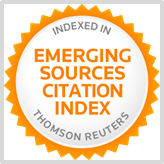Modeling Sustainable Development of Cryptocurrencies by a Fractional Pure-Jump Process in DEA Framework
DOI:
https://doi.org/10.31181/ijes1412025178Keywords:
Data envelopment analysis, Fractional normal inverse Gaussian, Relative efficiency , Sustainable portfolio , Value at riskAbstract
Sustainable cryptocurrency modeling is vital for maximizing both economic and environmental benefits amid significant investor interest. This research develops a comprehensive methodology for cryptocurrency selection by holistically integrating financial aspects, such as returns and risk, with environmental sustainability. To quantify risk and further evaluate cryptocurrency efficiency, we employ an ARMA-GARCH model with fractional normal inverse Gaussian (FNIG) innovations to forecast Value at Risk (VaR) and expected returns. Subsequently, we apply Data Envelopment Analysis (DEA) to identify the most efficient cryptocurrencies, incorporating mining costs and the forecasted VaR as inputs—representing energy cost and risk, respectively—while using the forecasted expected returns as the output. This approach enables a direct comparison of cryptocurrencies based on these critical factors. Our findings demonstrate that accounting for the inherent stochastic behavior of cryptocurrencies leads to more accurate estimations, and the DEA highlights the essential role of energy costs in selecting efficient cryptocurrencies.
Downloads
References
De Vries, A., Gallersdörfer, U., Klaaßen, L., & Stoll, C. (2022). Revisiting Bitcoin’s carbon footprint. Joule, 6(3), 498–502. https://doi.org/10.1016/j.joule.2022.02.005
Cont, R., & Tankov, P. (2003). Financial modelling with jump processes. Chapman and Hall/CRC. https://doi.org/10.1201/9780203485217
Bollerslev, T. (1986). Generalized autoregressive conditional heteroskedasticity. Journal of Econometrics, 31(3), 307–327. https://doi.org/10.1016/0304-4076(86)90063-1
Barndorff-Nielsen, O. E. (1994). Normal inverse Gaussian processes and the modelling of stock returns.
Sun, W., Rachev, S. Z., & Fabozzi, F. (2008). Long-range dependence, fractal processes, and intra-daily data. In Handbook on Information Technology in Finance (pp. 543–585). Springer Berlin Heidelberg. https://doi.org/10.1007/978-3-540-49487-4_23
Kim, Y. S. (2015). Multivariate tempered stable model with long-range dependence and time-varying volatility. Frontiers in Applied Mathematics and Statistics, 1, 1. https://doi.org/10.3389/fams.2015.00001
Houdré, C., & Kawai, R. (2006). On fractional tempered stable motion. Stochastic Processes and their Applications, 116(8), 1161–1184. https://doi.org/10.1016/j.spa.2006.01.008
Kim, S. I. (2022). ARMA–GARCH model with fractional generalized hyperbolic innovations. Financial Innovation, 8(1), 48. https://doi.org/10.1186/s40854-022-00349-2
Kumar, A., & Vellaisamy, P. (2012). Fractional normal inverse Gaussian process. Methodology and Computing in Applied Probability, 14, 263–283. https://doi.org/10.1007/s11009-010-9201-z
Mba, J. C., Mwambi, S. M., & Pindza, E. (2022). A Monte Carlo approach to Bitcoin price prediction with fractional Ornstein–Uhlenbeck Lévy process. Forecasting, 4(2), 409–419. https://doi.org/10.3390/forecast4020023
Naseri, H., Najafi, S. E., & Saghaei, A. (2020). DEA model considering outputs with stochastic noise and a heavy-tailed (stable) distribution. INFOR: Information Systems and Operational Research, 58(1), 87–108. https://doi.org/10.1142/S2424922X18500055
Portela, M. C. A. S., Thanassoulis, E., & Simpson, G. (2004). Negative data in DEA: A directional distance approach applied to bank branches. Journal of the Operational Research Society, 55(10), 1111–1121. https://doi.org/10.1057/palgrave.jors.2601768
Mirsadeghpour Zoghi, S. M., Sanei, M., Tohidi, G., Banihashemi, S., & Modarresi, N. (2021). The effect of underlying distribution of asset returns on efficiency in DEA models. Journal of Intelligent & Fuzzy Systems, 40(5), 10273–10283. https://doi.org/10.37190/ord210103
Alqudah, M., Ferruz, L., Martín, E., Qudah, H., & Hamdan, F. (2023). The sustainability of investing in cryptocurrencies: A bibliometric analysis of research trends. International Journal of Financial Studies, 11(3), 93. https://doi.org/10.3390/ijfs11030093
Anyssa, T., Roua, M., & Saloua, B. (2024). Cryptocurrencies and environmental sustainability: A complex challenge and emerging positive trends for logistics transactions. In 2024 IEEE 15th International Colloquium on Logistics and Supply Chain Management (LOGISTIQUA) (pp. 1–6). IEEE. https://doi.org/10.1109/LOGISTIQUA61063.2024.10571439
Koemtzopoulos, D., Zournatzidou, G., & Sariannidis, N. (2025). Can cryptocurrencies be green? The role of stablecoins toward a carbon footprint and sustainable ecosystem. Sustainability, 17(2), 483. https://doi.org/10.3390/su17020483
Beck, A., Kim, Y. S. A., Rachev, S., Feindt, M., & Fabozzi, F. (2013). Empirical analysis of ARMA-GARCH models in market risk estimation on high-frequency US data. Studies in Nonlinear Dynamics and Econometrics, 17(2), 167–177. https://doi.org/10.1515/snde-2012-0033
Kim, Y. S., Rachev, S., Bianchi, M. L., & Fabozzi, F. J. (2009). Computing VaR and AVaR in infinitely divisible distributions. http://dx.doi.org/10.2139/ssrn.1400965
Ashley, R. A., & Patterson, D. M. (2010). A test of the GARCH (1, 1) specification for daily stock returns. Macroeconomic Dynamics, 14(S1), 137–144. https://doi.org/10.1017/S1365100510000015
Qian, B., & Rasheed, K. (2004). Hurst exponent and financial market predictability. In IASTED Conference on Financial Engineering and Applications (pp. 203–209). Cambridge, MA: ACTA Press.
Downloads
Published
Issue
Section
License
Copyright (c) 2025 Navideh Modarresi, Moshtagh Darvishi, Shokoofeh Banihashemi (Author)

This work is licensed under a Creative Commons Attribution 4.0 International License.






















 All site content, except where otherwise noted, is licensed under the
All site content, except where otherwise noted, is licensed under the